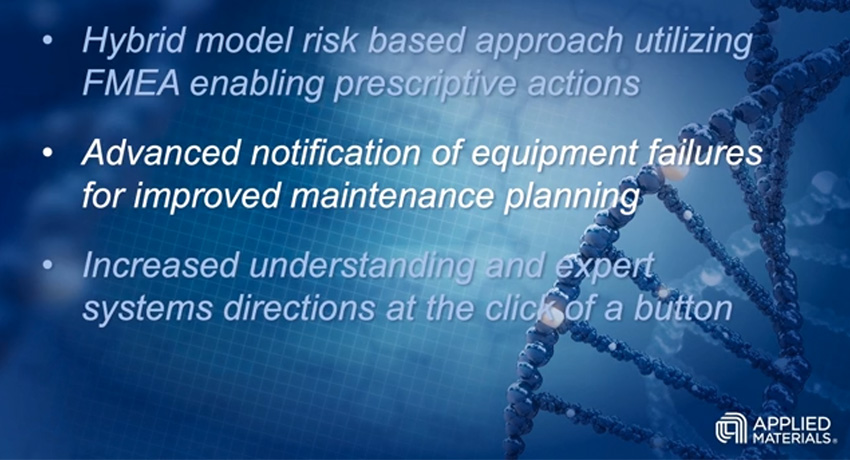Transcript
Our unique, risk-based approach allows you to easily build Predictive models related to known failure modes. This method enables you to also identify prescribed actions based on the predicted failure modes and their main contributors. And we realize the importance of not only developing robust models but also the need to get the required information to the correct individual at the right time.
And it’s really about generating understanding and making it readily available and then putting that understanding into practice. When modeling, it’s critical to begin with an understanding of both the process and the equipment in order to build a robust model for either the process or equipment health since they’re so interrelated. Now we always begin with a failure mode analysis to understand the various ways the equipment can fail and then we analyze the data that would be needed to predict each failure.
Now this really enables us to prioritize the models based on the process risk. Often the data is very complex or there are critical variables that are missing and so mechanistic features or soft sensors must be developed. Now these features are then fed into machine learning algorithms in order to recognize patterns that indicate equipment deterioration before the failures actually occur.
The combination of engineered features and empirical models yields a hybrid approach that often is able to not only identify equipment or process variation but human error as well. A SmartFactory can easily be configured to send notifications with relevant information such as the main contributors and prescribed actions as well as have attachments of reports from various systems such as the work order we see here coming from a CMS system. In addition the links are embedded to enable the reset of model limits based on possible maintenance events as well as links to the actual model alert which would bring us to our portal page that you see here.
The actual alert with information pertaining to the equipment including the exact failure mode triggered as well as which modes had no issues. Here is the dissolved oxygen probes show that they are operating in good health but that there is an issue with the cascade control equipment as the controller switches from air to oxygen control. So the, chart is then an indication of the multivariate result of the current batch as well as the previous batches and we can see here vertical lines that indicate events coming from our CMMS system as well as batch deviations that help us to identify if possible equipment variation is due to preventative maintenance operations but also help to confirm the model predictability.
The MVA result shows the main contributors to this failure mode and then also the prescribed actions to rectify this before the failures occur are indicated below. Now as you can see there are a number of models running for this bioreactor that drive the overall health calculation that we see in this gauge and we have a template for many of these models for the common unit operations such as CIP or pressure hold or sterilization in place as well as the batch growth which often only require a few minor adjustments to be utilized with the new installations. We also have various equipment groups for the common equipment types as you can see here the temperature control agitation and pH.
Now these models can be running at the end of a batch or the end of a unit operation or a particular phase even within a batch or even as frequently as each data collection event as you can see here with this pH control model that’s detecting an issue during a run. This issue is due to an abnormal control output related to the normal response pattern of pH at a specific stage of the batch which led operators to identify that the base pump was slipping and needed to be adjusted. These models are easily incorporated into our maintenance planning page which also connects to CMMS systems providing the capability to automate work order generation and also track overall maintenance performance related to equipment health as well as prediction.
There are some advanced filtering options and even a search function to help locate in this case a specific valve. As an example we can verify the work done related to this equipment the possible unfounded or founded alerts and the condition-based model predictions for when the maintenance should be performed. Here we can see that the date related to the yearly preventative maintenance as well as the required condition-based maintenance date based on number of cycles which would indicate the potential to wait before performing a maintenance.
However, we know that soft parts are also subject to wear based on temperature exposure and this particular valve is in line with a sterilization procedure that occurs frequently and as we see from the temperature exposure and cycles model we’re actually near the end of the expected lifespan of this particular diaphragm. Predictive maintenance is not only important for improved equipment availability and ensuring that maintenance is only performed when required but even more critical is the impact that Predictive maintenance has on reducing risk by increasing detectability and therefore improving quality and the safety of everyone that relies on our products. I hope you’ve enjoyed this short video on Predictive and Prescriptive Maintenance and we hope you come back to see more about SmartFactory Rx.

